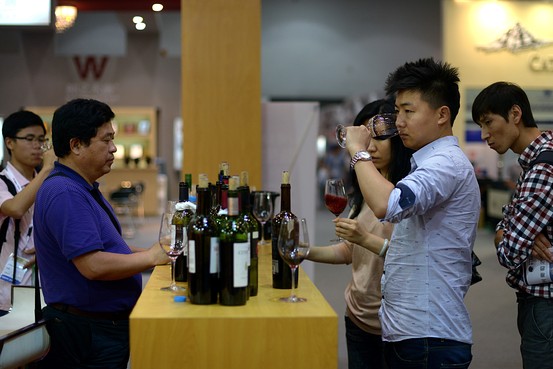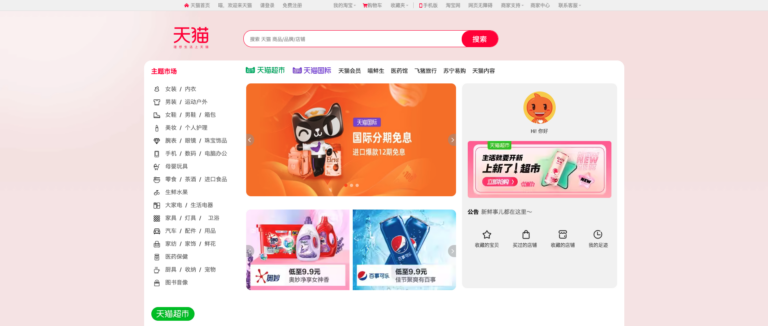To know more about the Wine industry in China, contact us at dx@daxueconsulting.com
In 2013, China became the biggest consumer of red wine in the world on a per capita basis, overtaking France, and Italy. Moreover, between 2015 and 2020 Euromonitor International believe that the total growth in the volume of red wine in China will increase by 82.5%. Growing demand, however, does not necessarily equate to easy sales. Indeed, selling wine is still challenging and requires a sophisticated knowledge of Chinese consumer habits, perceptions, and tastes. By mainly focusing on the red wine sector in China, this article will demonstrate how to sell wine to Chinese consumers.
Perception of Imported Wines in China
Imported wine, especially red wine, is becoming popular among the upper and the emerging middle classes. Indeed, the red wine industry has been registered as the fastest volume growth in 2015, with an increase of 11% in sales. it is viewed as a luxury gift and even perceived as a healthy alternative to other high-end drinks. Red wines, however, have an advantage in the market as the color red is synonymous with luck, wealth and power to Chinese consumers. Moreover, it is associated with the communist government. By contrast, white wine as for the color is associated with death and seen at funerals. Consequently, it is evident why imported wine is gaining in popularity and equally clear why the red wine market is excelling especially.
Pricing strategy

In terms of a pricing strategy, cheaper imported wines are unlikely to be held in esteem by Chinese consumers. After all, red wine is a symbol of wealth, not frugality. Imported wines, therefore, take advantage of the admiration Chinese consumers prescribe to European society and quality. Chinese interest in wine is entwined with a cultural image, having an effect on the cost. Indeed, buying an expensive French or Italian wine allows buyers to earn face in China. Their premium quality makes Chinese consumers feel safe about their purchase and avoids losing face in front of their guests.
Although the significant prices of red wine in China have led the beverage to be viewed as a drink for the elite, it is becoming increasingly “fashionable” among young people. Indeed, most foreign enterprises are now holding many tasting promotions across China in order to enrich consumer knowledge in different social groups. This transition could affect pricing in the future.
Lastly, foreign producers are also advised to note that China is not a singular market, but many. Prices of wine will vary depending whether they are sold in Beijing or Shanghai for example.
Chinese Consumers Taste

Consumer drinking habits have changed in China. Chinese consumers are progressively seeking to emulate the drinking habits of their Western counterparts. Indeed, wine is often consumed during Chinese banquets, official ceremonies and feasts. As in most Western countries, it’s not unusual for someone to propose a toast in the traditional form of “ganbei“. Wine has also become very popular as a gift for the Chinese New Year, the Spring Festival, and the mid-Autumn Festival. In other words, wine satisfies the needs of Chinese businesses culture and upper classes to enjoy and enhance social occasions.
Additionally, young and middle-aged Chinese people emulate Western drinking habits more frequently too. An increasing number of Chinese women are buying red wine for its healthcare functions such as the beauty maintenance. Wine-tasting clubs have become popular in Beijing, Shanghai and Shenzhen. It has also become easier to find specialist wine stores in the first-tier and second-tier cities. Until now, the stereotype of a Chinese wine drinker is a businessman with an official, over a bottle of Chateau Lafite.
It is, however, still important to recognize that Chinese consumers have different tastes. They like sweet drinks and it is still common in China to either drink fruited wines or to mix wine with lemon, ice or soft drinks to achieve a sweeter taste. This is the reason why Chinese consumers are more attracted to still red wine than sparkling wine which is sourer.
Purchase methods of Chinese consumers
Chinese consumers often go online to look for information on wine. Hence, social media has become a source of information to exchange ideas and perceptions of the wine industry. Consequently, any winery planning to enter the Chinese market should look at the digital world, with mediums such as WeChat and Weibo, as a way to market their bottles and educate consumers about wine culture. Furthermore, several exhibitions and international wine and spirits fairs are held annually across China. With an upgraded consumption in China, the demand for wine has shifted from products with lower unit prices to products with higher unit prices.
How to sell wine to Chinese consumers?
Chinese consumers are clearly different from Westerners in terms of their tastes and some of their perceptions about wine. That being said, Chinese consumers are willing to accept new sorts of wines and ample room still exists in China to benefit from this huge market, alongside the dominant French, Spanish and Italian vintners who already dominate the territory. Additionally, as the middle-class population increases, more consumers might be willing to obtain a deeper understanding of wine and consequently, we can expect imported wine to become more popular in the coming years and perhaps a wider range of it.
Case study: Grape Wine Industry
Daxue Consulting has several experiences within the wine industry, one of its client selling grape wine in Europe wanted to understand the opinion of the Chinese consumers in choosing the most compelling wine product. Daxue Consulting had run different methodologies in order to get the Chinese Customers insights. One of the methodologies implemented was the focus group, Daxue had gathered 2 different groups of people, Chinese people who were the connoisseur and Chinese people who were drinking wine occasionally. The first step of the focus group was based on the whole product selection of the client, the second batch was a mix of the client’s product and its competitors in China.
The report has helped the client to seize the opportunities in China. One of the main trends of the results shows that Chinese wine consumers have a huge preference on still light grape wine, especially for the red one.
Read more:
- https://online.wsj.com/articles/chinas-wine-market-shifts-toward-entry-level-1405305923
- The market of Wine in China
Follow us on our Social Media – Below is our latest post on the beverage market in China:
The #beverage market in #China is one of the fastest growing markets. Read our full report: https://t.co/35hCKveclH #ChineseConsumers
— Daxue Consulting (@DaxueConsulting) September 8, 2015





